


Chiinyan's
kawaii
ARTBLOG
©chiinyan.deviantart.com [ちい-にゃん]
Manga and Comics Panelling Tips
Are you planning on creating some manga or comics on the future? Or are you currently working on it?
Then it's time for you to know some panelling/layout guidelines..
So in this tutorial I will state some effective panel layouts that are greatly used by comic and manga artist.
I know there are a lot but i'm giving you only 4 just to introduce panelling/layout and what factors you should consider.
First of all,
What is Panels?
Panels allows you to emphasize emotions, scenes, moods and the flow of the story on your comics or manga. It tell the transitions of your story and It helps your viewer to understand whether your story is in future, flashback or in present time.
1. This first example of panels are usually used in japanese comics:

As you can see they place a very small panel in here.
Wonder how artist used this?
Take a look at this example manga page below --


Did you notice the flow?
It give you just a bit of what's going to happen next and usually give the full information on the next few panels.
Usually the drawing place here have less details.
So eventually the flow of the readers eyes will be:

The readers eyes don't focus much on the small panel, indeed proceed to the next panel which the conversation proceeds.
NOTE: Big panels, Big text and the page with more contrast gets the eye of the reader first. You can choose which panel will be red first.
Be sure to plan your panel first to avoid confusion of readers eye.
2. Second example of panels is this:
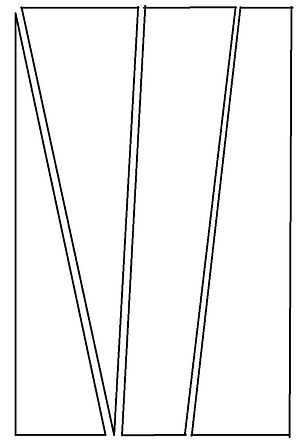
This panelling usually used in sequence to sequence transition.
(ie.,when all of the characters do the same thing at the same time.)
Here's the example (psycho busters manga page 40)

What do you notice about the transition? Is it fast or slow?
Well in this case, the flow of the readers eyes was fast because it gives a very straight and short look towards the transition.
It looks like you are only glancing on the characters shown.
so, the sequence of reading will likely be:
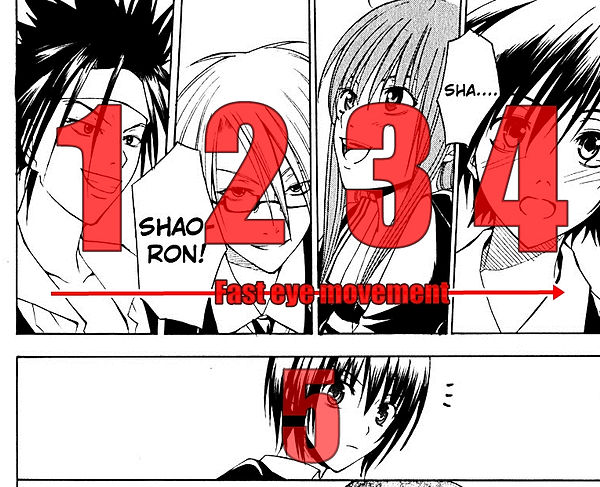
3.Third example of panel is:
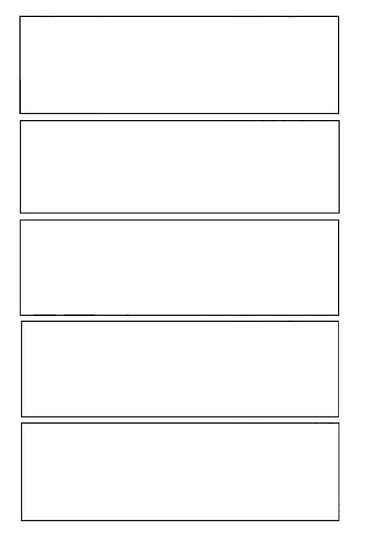
Do you already know where is this panel usually used?
Right! It usually used in comic strips or even meme comics!
Here's the sample(courtesy of rivkah's tutorial manga):
This panel gives a smooth and a little slow flow on the transition.
The readers eyes go straightly on each drawings in the panel.
The sequence of reading are like:
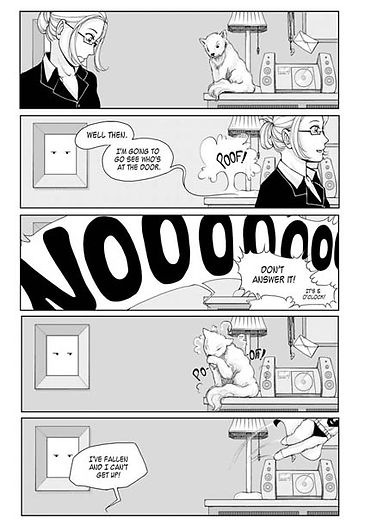
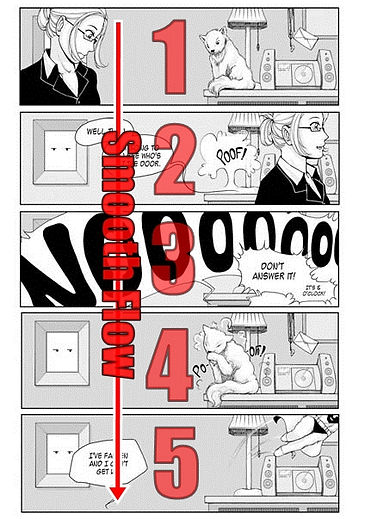
NOTE: The average panels in a page is 5-8.
Don't overcrowd your panels in one page.
However, it is depending on what size of paper will you use. The maximum number of panels in a big paper is 10-15 .
4.The fourth and last example of panel is used when you want to emphasize the scene or character.
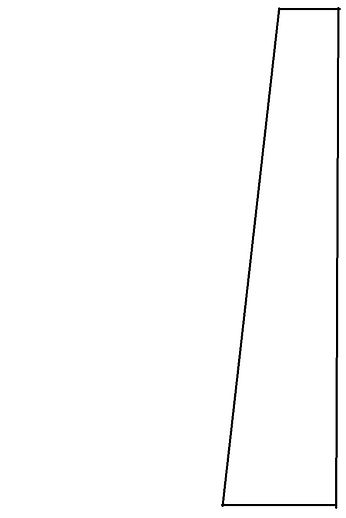
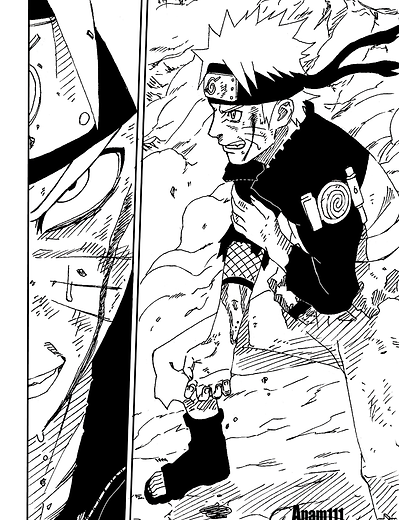
In this you can clearly see what's happening on the scene.
but like the first panel example, it only give you a bit of what's going to happen next.
This time, the drawing place here have more details and have more feelings on it, whether it's the most funniest scene, most romance or most terrifying scene etc.,
Sequence of reading are more like:
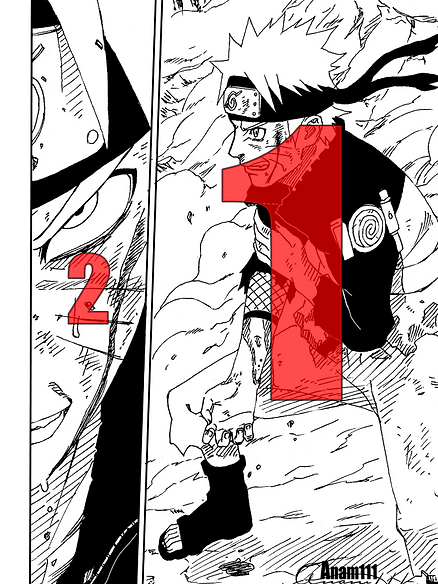
Random Tips:
*Don't put transitions that are not related to the first panel.
It cause confusions on the readers mind, unless you know the Non-sequiter technique of transitions.
*Balloons or text quotes are part of panelling, If you are planning your page without text, leave the page a bit empty, then when the text in placed in, it would be just about right.
*Don't over crowd the page with panels! It will cause too much confusion on the image transitions.
*A little visual variety keeps the storytelling interesting.
*Be sure you have your story done before creating/starting your work. It's best to have guideline done first.